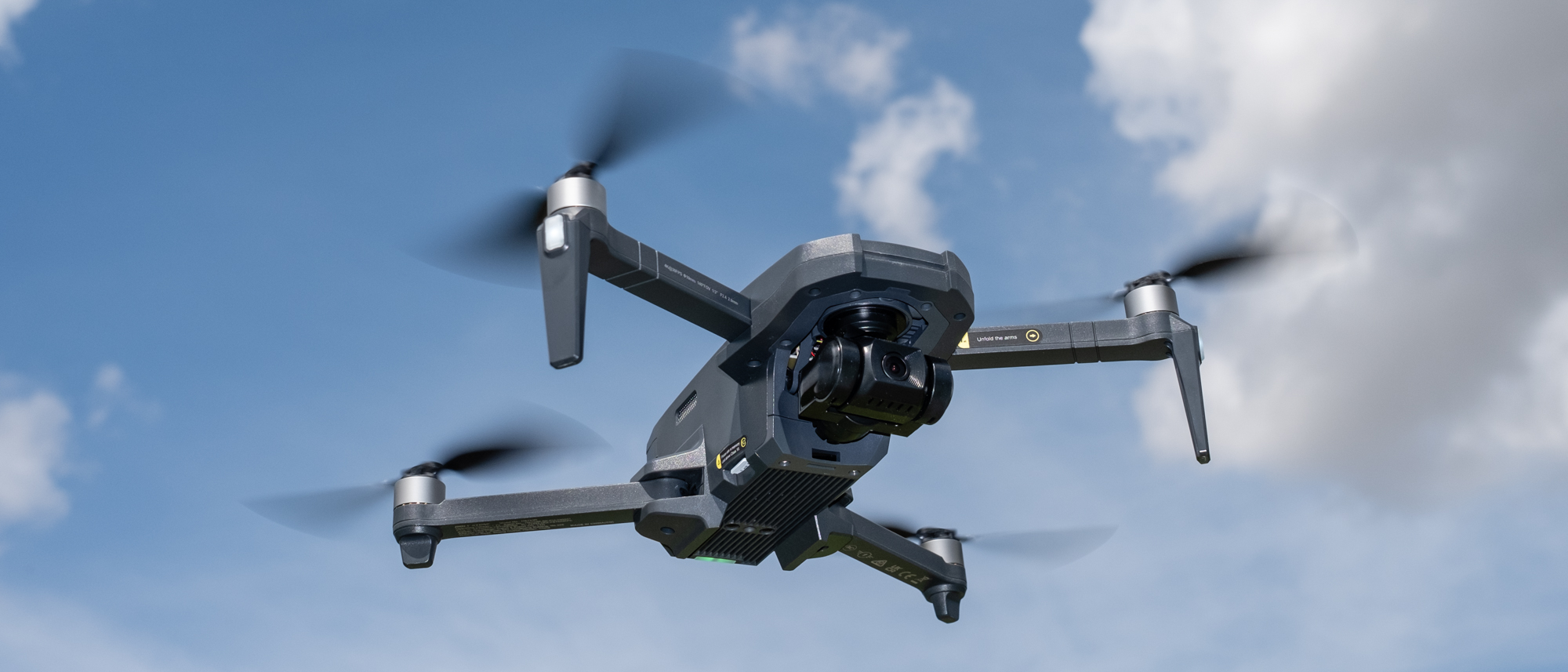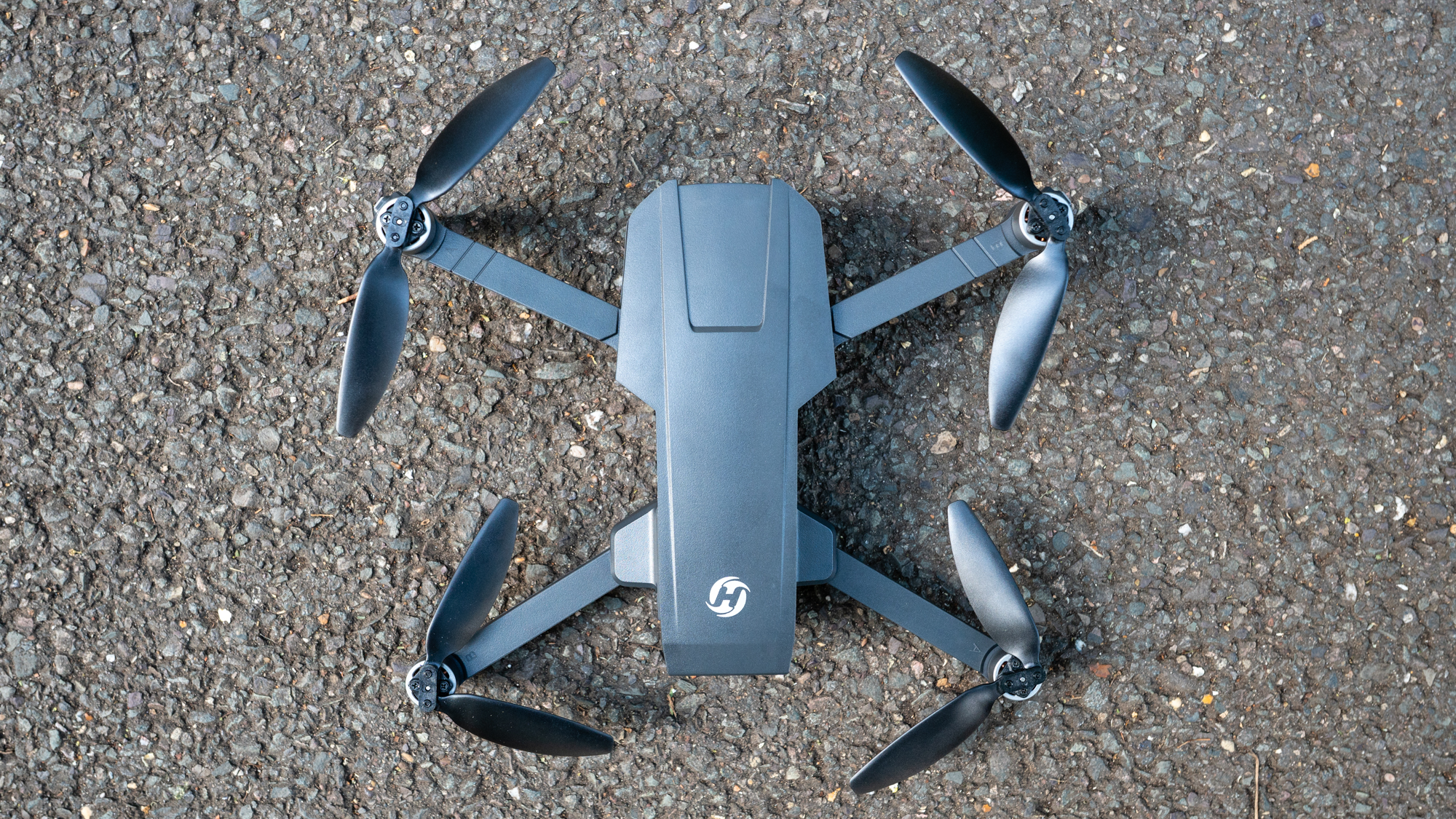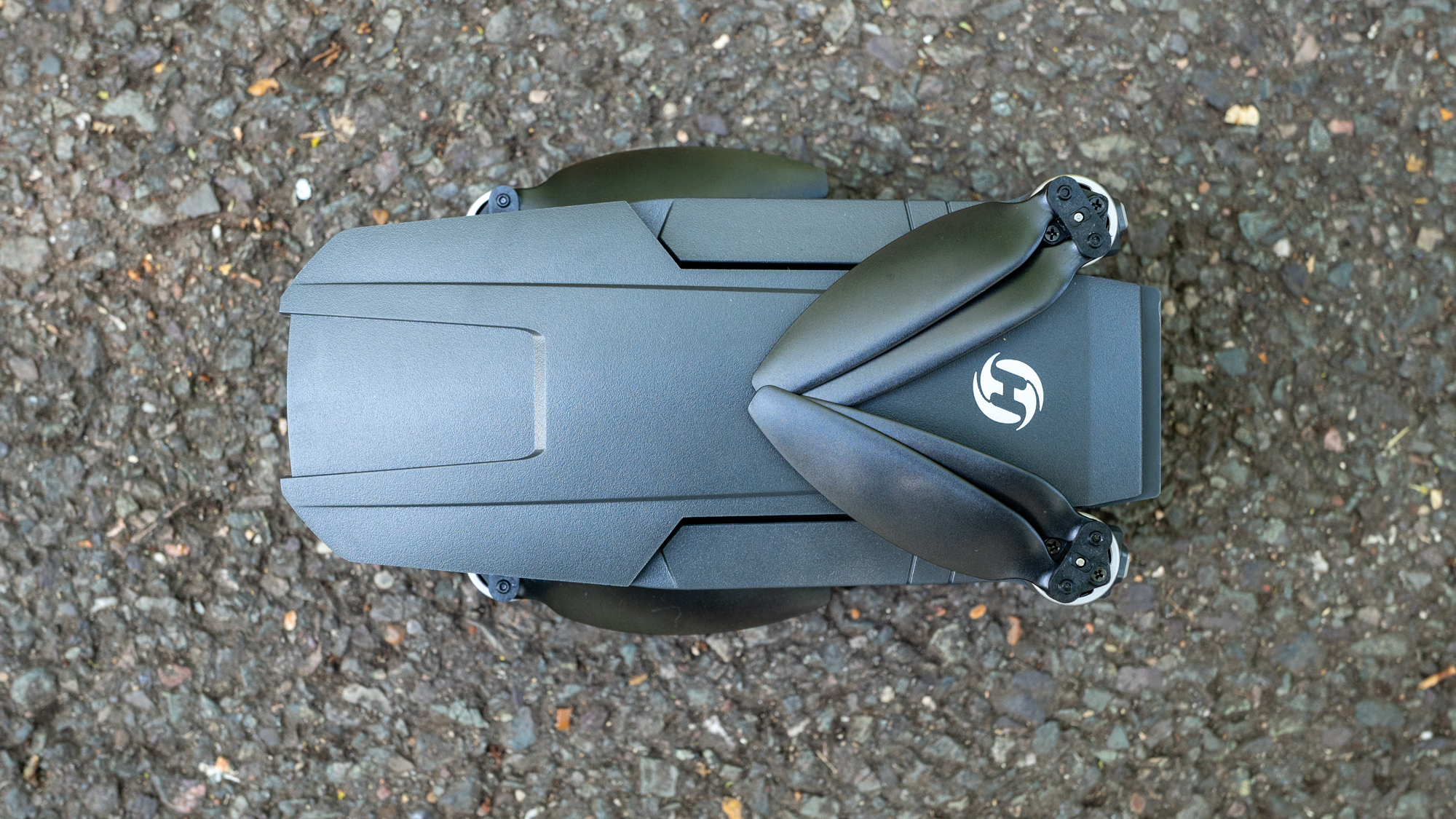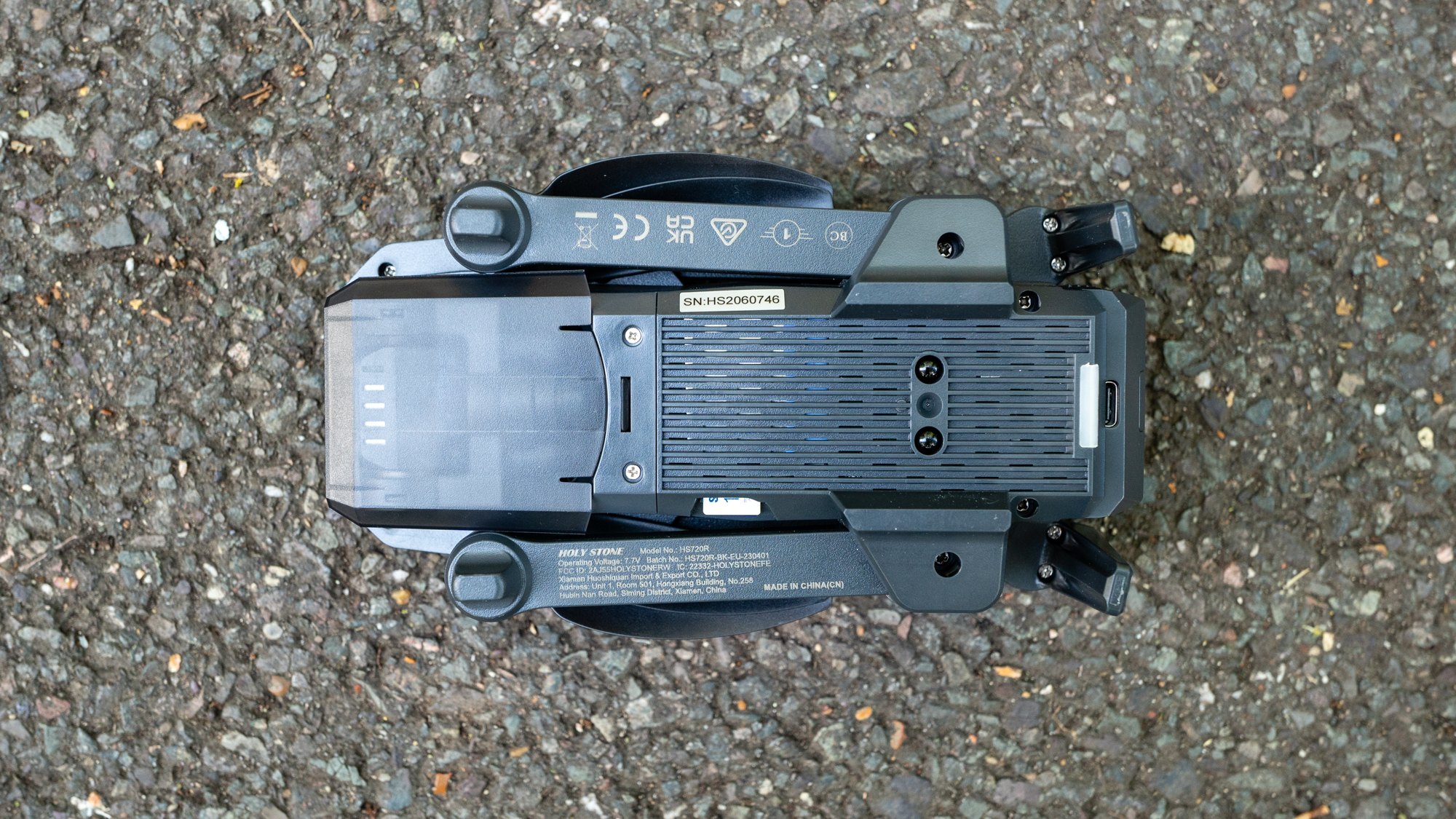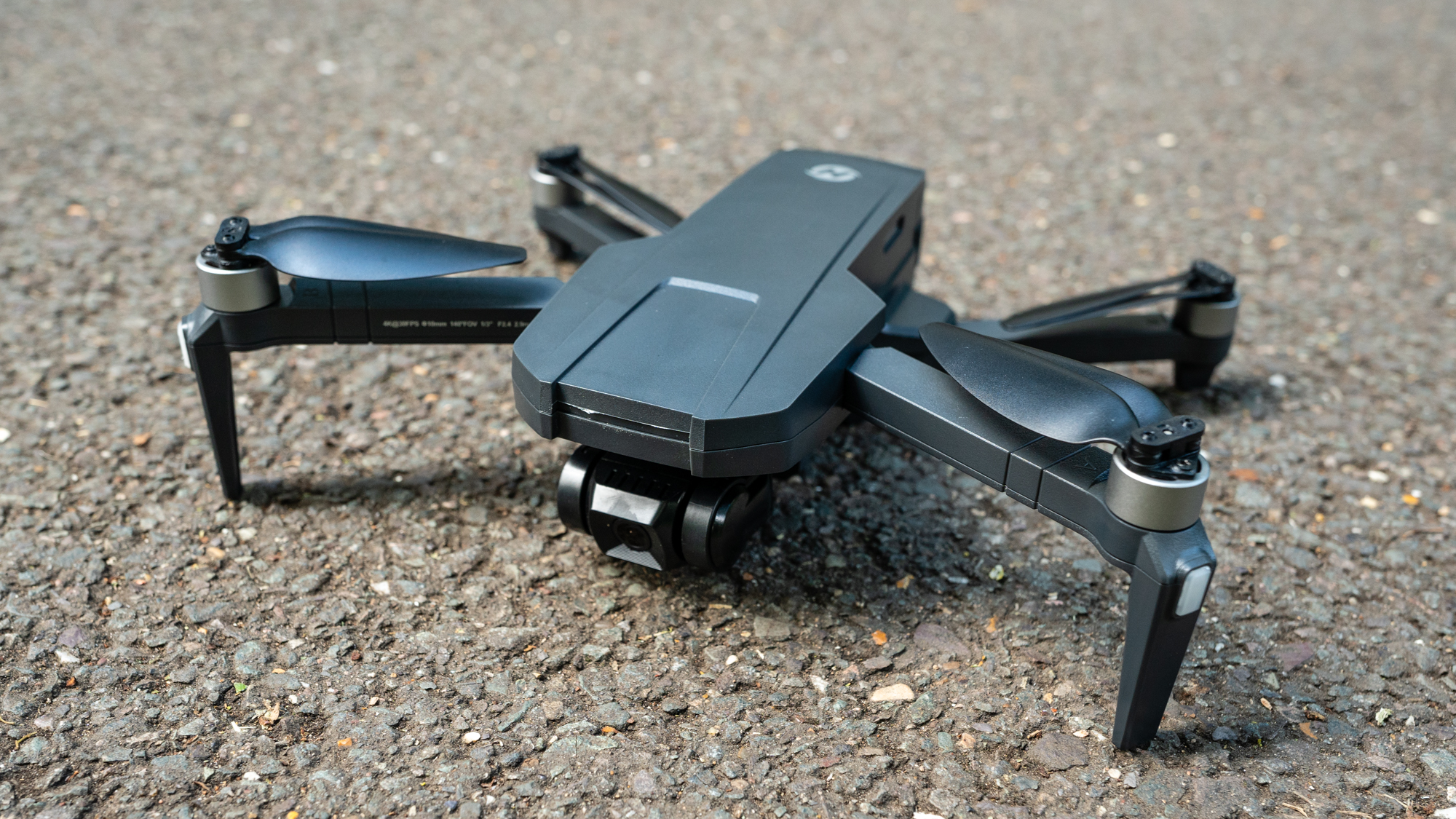Space Verdict
The Holy Stone HS720R is a more impressive drone than its predecessor, the HS720G, thanks to the 3-axis gimbal and time-lapse feature, but image quality remains the same.
Pros
- +
Attractive price for beginners
- +
Photos, 4K video and time-lapse
- +
3-axis mechanical gimbal
Cons
- -
Drifts when hovering
- -
Photos are less sharp than videos
- -
Limited camera control
Why you can trust Space.com
Holy Stone is well-known in the world of drones for its inexpensive beginner models, and the Holy Stone HS720R is the Chinese company's first model to feature a 3-axis mechanical gimbal. 3-axis mechanical gimbals are a feature that has only recently begun to trickle down to less expensive beginner drones and promises to dramatically improve the quality of videos captured with these models. So, could it make this one of the best beginner drones? Let's find out.
Weight: 13.72oz / 389g
Dimensions: 6.6x3.9x2.8 in / 168x99x71mm (Folded) 12x9.3x2.8 in / 305x238x71mm (Unfolded)
Battery: 2950 mAh LiPo / up to 26 minutes
Charger type: USB-A to USB-C cable
Modes: Beginner / Low, Medium and High speeds
Video transmission range: 9842 ft / 3 km
Video resolution: 4K & 1080p (FHD)
Frame rates: 4K at 30 fps / FHD at 60 fps
The Holy Stone HS720R is extremely similar to the Holy Stone HS720G, with the main difference between the two being the mechanical gimbal on the newer model. The HS720R is undoubtedly the better drone of the two in terms of features, which we'll cover in detail soon, but overall image quality has remained similar if not identical, and this is one of the weaker aspects of Holy Stone drones.
Where Holy Stone drones do excel for their price is when it comes to flight, and the HS720R is certainly no exception. Sure, it's not at the same level as the best drones currently available, but the drone does fly well overall despite a small amount of lag between the controls and the drone on some occasions and a tendency to drift a little when hovering. It's very much a case of getting what you pay for, and for absolute beginners, the HS720R is an interesting option.
The HS720R costs $360 / £350, which is understandably more expensive than the HS720G, and is available from Amazon in the United States and United Kingdom. The kit includes the drone, a controller, one battery, a USB-C charging cable, a set of spare propellers, a screwdriver for changing propellers and a carry case, so everything you need to get started with drone flight.
Holy Stone HS720R review
Holy Stone HS720R review: Design
- Compact and lightweight folding design
- Folding controller with internal battery
- 3-axis gimbal with Electric Image Stabilization (EIS)
The HS720R follows what's now become the standard, with a folding design that makes the drone more compact for easier storage and transportation. Folded, it measures just 6.6 x 3.9 x 2.8 in (168 x 99 x 71 mm) and expands to 12 x 9.3 x 2.8 in (305 x 238 x 71 mm) when the propeller arms are unfolded. The HS720R looks and feels very much like the Holy Stone HS720G, but is marginally larger and slightly heavier at 13.72 oz (389 g).
Both drones share the same 2950 mAh LiPo battery, which provides an advertised flight time of up to 26 minutes. During testing, flights were pushed to the limit in summer conditions until auto return to home was initiated and the drone landed at just under 24 minutes, so the flight time claim is pretty reliable. And when the battery reaches around 30-40%, altitude is limited to 120m while distance is limited to 300m.
You will certainly need at least two or three batteries, which can be purchased separately, and HS720G owners can use existing batteries if they upgrade to the newer model. Charging time is up to five hours via the included USB-C cable, which is slow, while the controller also charges via USB-C thanks to an internal battery and takes around 1.5 hours to charge and provides up to 2.5 hours of use between charges.
Breaking space news, the latest updates on rocket launches, skywatching events and more!
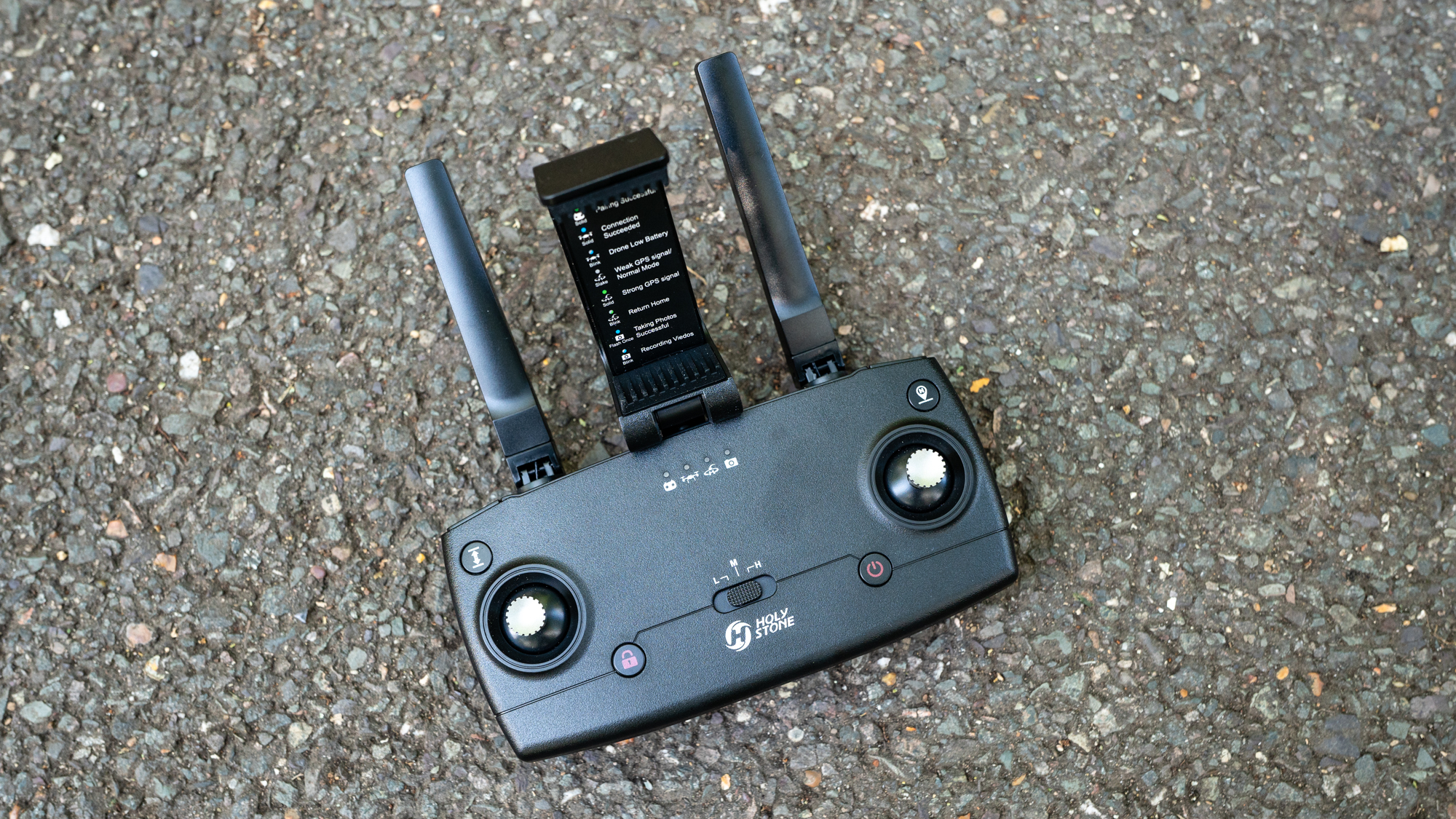
The controller is fairly simple with just flight controls, a gimbal dial to adjust the pitch of the gimbal, photo and video shooting buttons, a speed control, a motor unlock button and a power button. All camera controls and other options are accessed within the Ophelia Fly app for Android and iOS. Build quality is good overall, but the drone doesn't feel high-quality by any means, which is to be expected for the price.
Holy Stone HS720R review: Functionality
- GPS positioning
- Basic automated flight modes
- Intelligent Return to Home
The HS720G flies reasonably well overall but there is sometimes a small amount of lag between the controller and the drone, which is most common when the drone is being flown further away but within legal limits. And despite offering GPS positioning, the drone also tends to drift a little when hovering. It would be better if the HS720R didn't suffer from these minor issues, but they're certainly not a deal-breaker.
One of the problems with the HS720G was that the connection between the controller, smartphone and drone was prone to disconnection, but with the HS720R this was not a problem, with a solid connection and control maintained throughout flights. The transmission is rated at 3 km (1.86 miles), which is too far to legally test, but the improved transmission is a most welcome upgrade and ultimately provides a more reliable flying experience for beginners.
When it comes to safety features, the HS720R offers GPS positioning to hold the drone in position, which also allows for Return to Home (RTH) functionality where the drone autonomously returns to the take-off location. This can be initiated manually by pressing the RTH button, which is applied manually when the transmitter loses signal to the drone for more than six seconds and when the battery is low. Plus, RTH altitude can be set manually in the Ophelia Fly app.
Three flight speeds provide the ability to select the speed most suitable to the flying situation, while the HS720R also offers Follow Me (subject tracking), Waypoint and Time-lapse features. These features all work but they're crude compared to more expensive drones, and with no collision avoidance, you have to take care when using them. The Time-lapse feature works reasonably well and is easy to set up, with several flight and time-lapse options available, but it appears that the results are simply sped-up videos rather than true time-lapse videos composed of multiple photos converted into a video.
Holy Stone HS720R review: Performance
- Limited camera functionality
- 4K photos & 4K video at 30 fps
- Video image quality is better than photos
Image quality has never been one of the stronger aspects of Holy Stone drones, and the HS720R produces image quality comparable to other models. The camera provides a 130-degree field of view, but this does create strong barrel distortion as soon as the camera is pitched (tilted) downwards, and chromatic aberration is visible along some subject edges. The gimbal also only moves between zero degrees and 70 degrees rather than stretching to 90 degrees, so you can't point it straight down at the ground.
Video image quality is superior to photo image quality but neither is suitable for professional use, though for beginners and enthusiasts the deficiencies in image quality may not be an issue. The camera provides limited control over settings with Brightness, Saturation, ISO and White Balance only available.

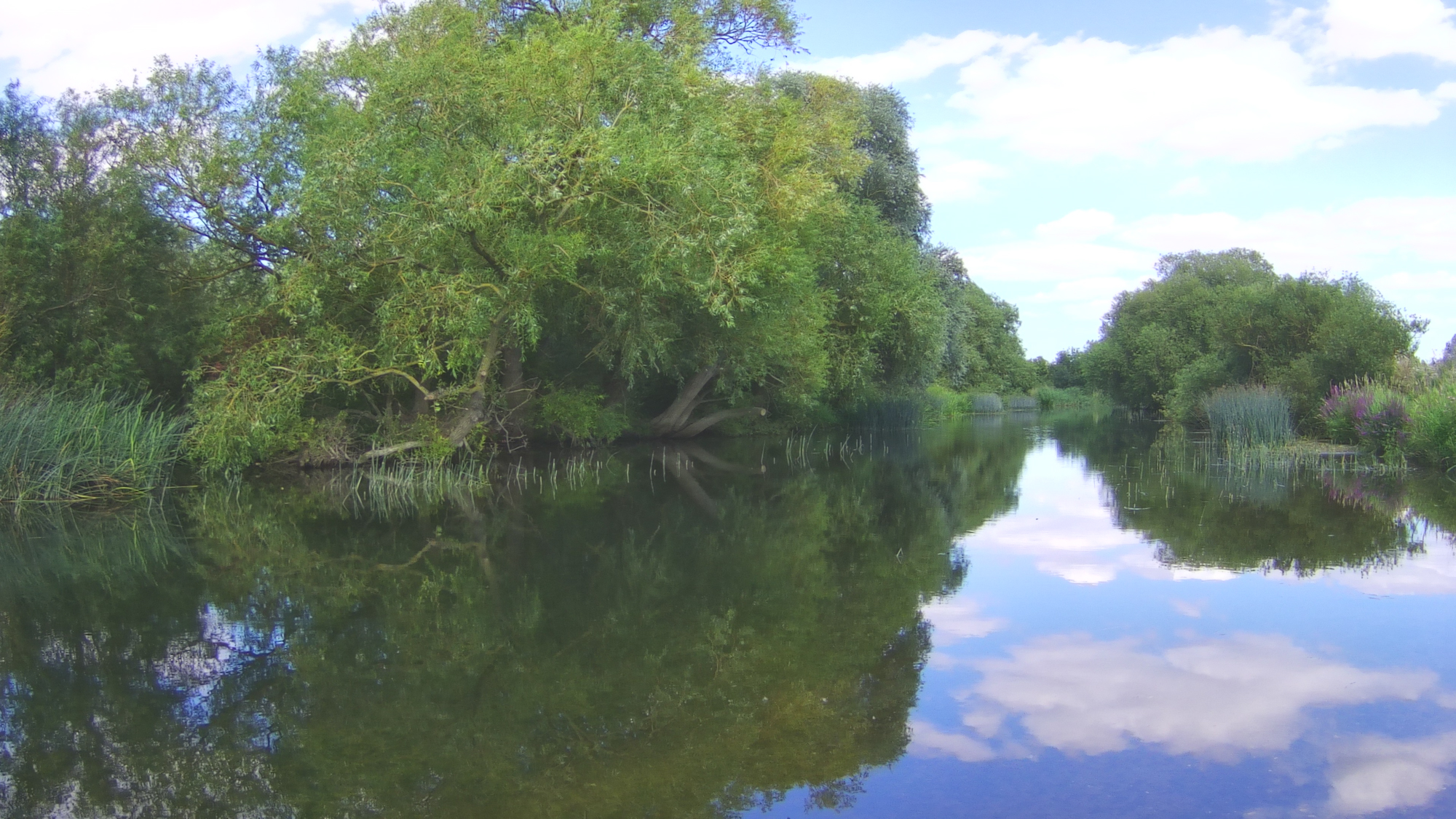



There are also three creative effects – Grayscale, Bright and Nostalgic that can be applied. In the majority of situations, leaving ISO and White Balance set to Auto produces the best results, with Brightness being the most useful control to use when necessary. More control over camera settings would be preferable, such as shutter speed and frame rate at the least, but as it is, the HS720R is extremely beginner-friendly.

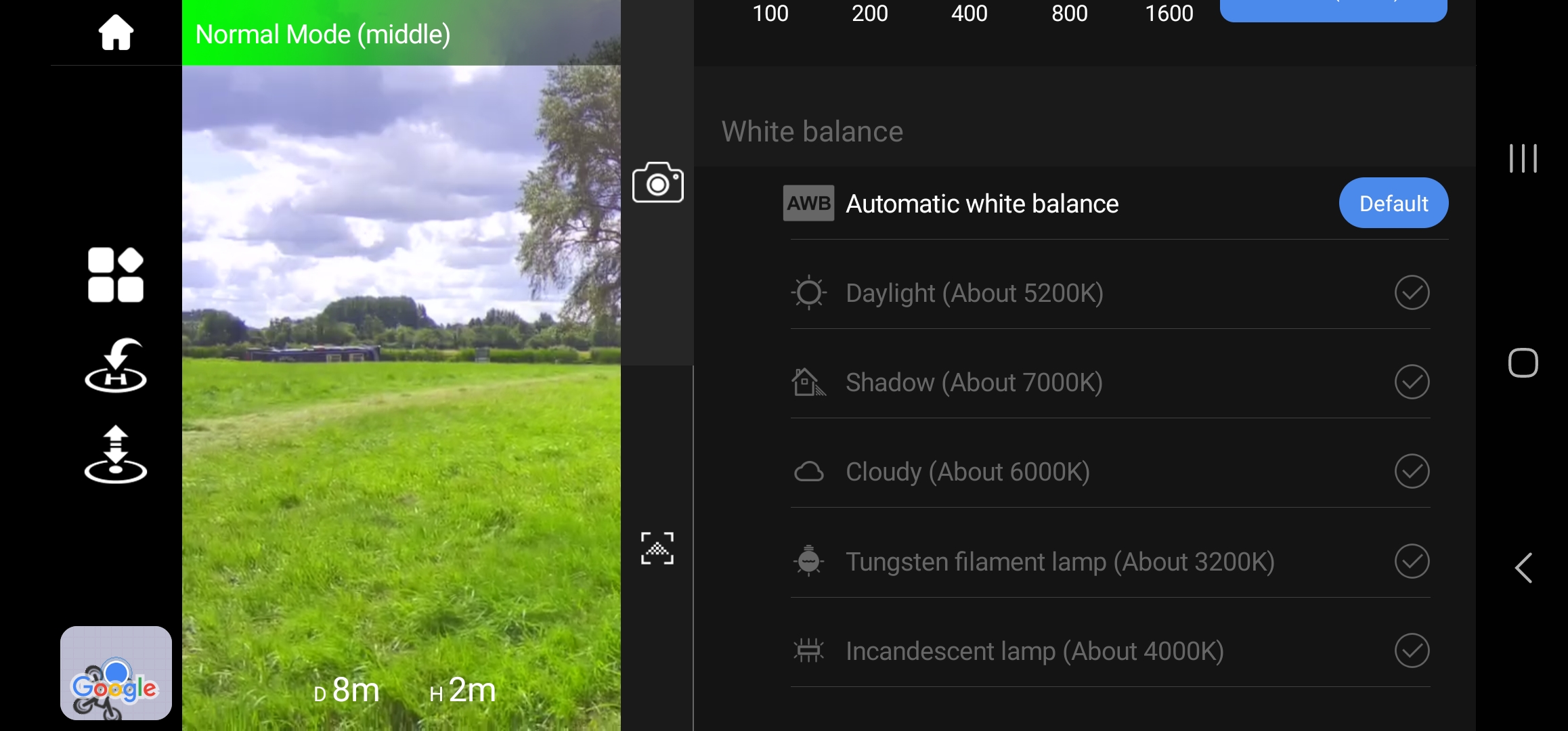
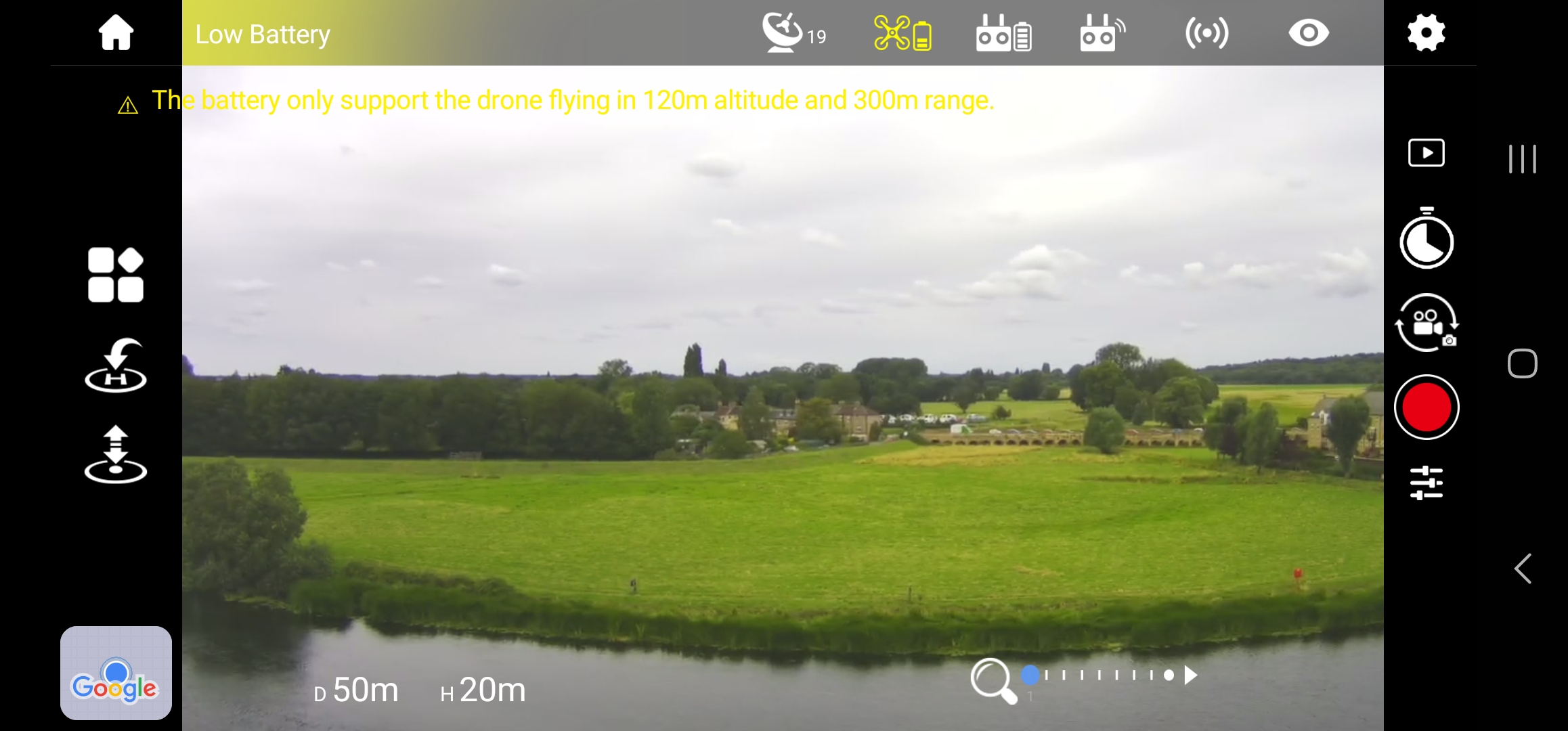

Video can be captured in 4K at 30 fps and FHD (1080P) at 60 fps, and the 3-axis gimbal alongside Electronic Image Stabilization does produce smooth footage. The gimbal pitch (tilt), however, isn't the smoothest, so it's best to keep it locked at the desired angle when shooting video. Photos are captured in JPEG format in 4K dimensions, which translates to around an 8.2MP image. Photos are slightly softer in terms of sharpness than videos, but like HS720R videos, they're perfectly usable in a beginner context.
Holy Stone HS720R review: Cost
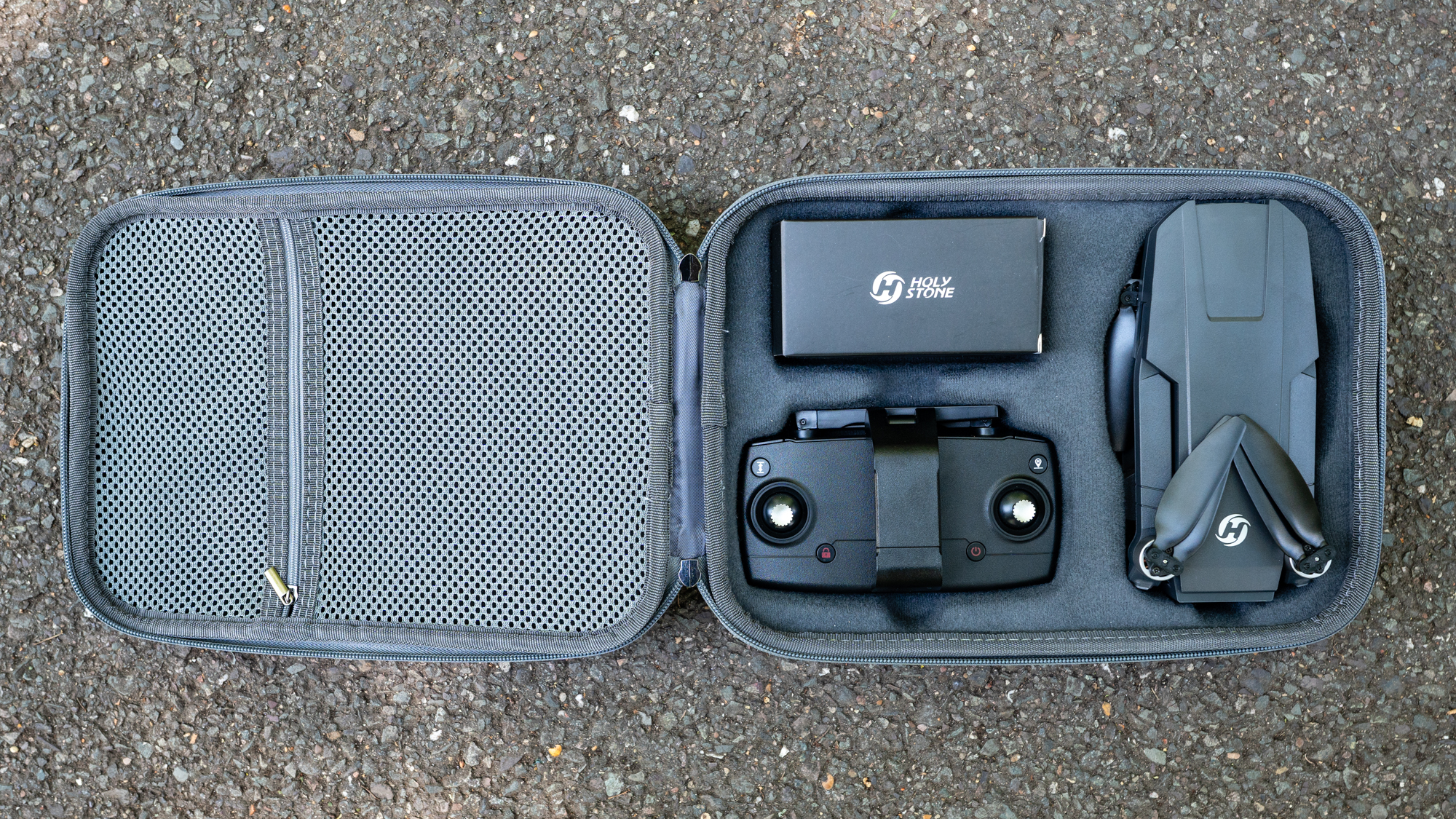
At the time of writing, the Holy Stone HS720R is available to purchase through Amazon in both the US and UK, and other US retailers for $360 / £350. It's likely that the drone will also be available directly from the Holy Stone website in the future. This price makes it more expensive than the HS720G with its 2-axis gimbal and Electronic Image Stabilization but keeps it within the range you'd expect for a basic beginner model with a 3-axis gimbal.
The HS720R comes in a kit offering everything you need to get started, except for registering the drone or registering as a drone operator depending on your country of residence. The kit includes the HS720R drone, a controller, one battery, a USB-C charging cable, a set of spare propellers, a screwdriver for changing propellers and a carry case. You can also purchase additional batteries separately to increase flight time.
Should you buy the Holy Stone HS720R?
The HS720R is a reasonably good beginner drone, but at $360 / £350 it's more expensive than the DJI Mavic Mini 2 SE, which costs $339 / £309 for the basic kit with one battery. This is the least expensive DJI drone available, and although it's also one of the most basic, you will get a much more rounded flight experience and better image quality with this drone. However, if you'd prefer a non-DJI model, the HS720R does provide everything you need to get started with drones at a basic level and is a model worth considering in this situation.
If the Holy Stone HS720R isn't for you
The Holy Stone HS720R is a budget beginner model with limited camera and video functionality that may be enough for many people, but if you'd prefer more camera control, improved image quality and more advanced flight controls, some alternative models may suit your requirements.
At the lower end of the scale, the Potensic Atom SE which we've previously reviewed is a great sub-250g beginner model with a 2-axis gimbal and Electronic Image Stabilization that flies well and captures good-quality photos and videos. A more advanced model is the DJI Mavic Mini 3, which is the best beginner model available and offers the best image quality, features, flight and build quality in the beginner drone category.
James is an award-winning freelance landscape and portrait photographer, as well as a highly experienced photography journalist working with some of the best photography magazines and websites with a worldwide audience. He’s also the author of The Digital Darkroom: The Definitive Guide to Photo Editing. www.jamesaphoto.co.uk
